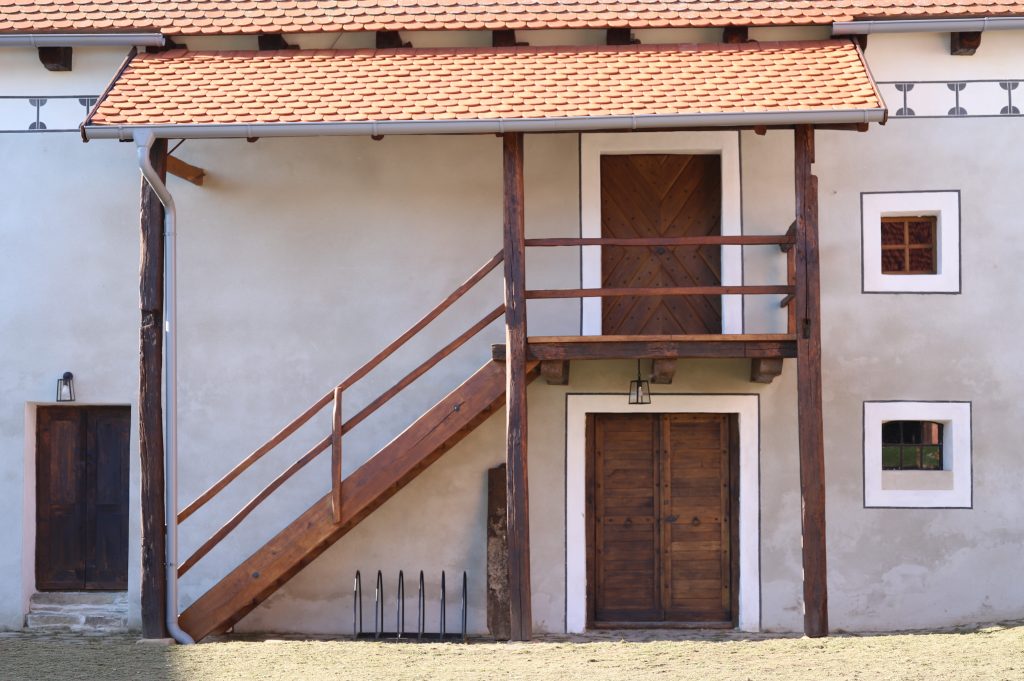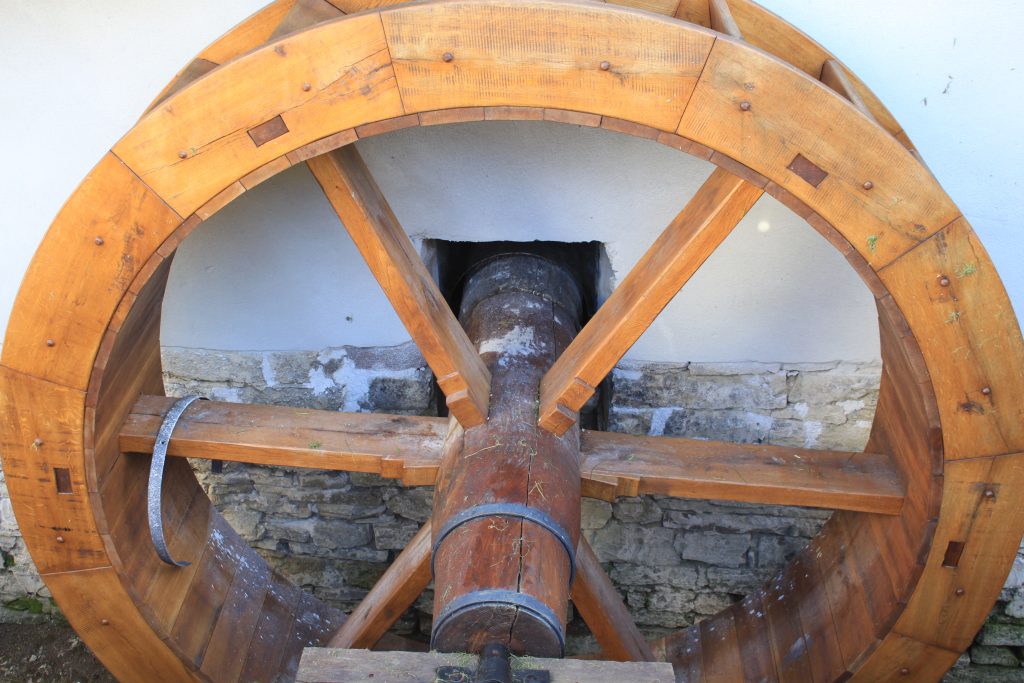National cultural monument
The mill is one of the dominants of the monument zone. The Hutterite community bought it in 1545 from the peasant Kliment Papp. Four dating cartridges have been preserved on the façade (1739, 1816, 1822, 1921). The year 1739 is probably connected to the oldest plaster layer and the current floor plan of the building. During the 19th century, the mill was rebuilt with coarse-grained plaster. The interior of the flour castle dates back to 1850 and is probably related to the renewal of the mill technology. Until 1945, the mill was jointly owned by the Hutterite community, which leased it and transferred the profit to the common treasury. It stopped grinding there with the abolition of private trades in 1951. It fell into disrepair for half a century. In 2001, the reconstruction of the truss and roof was carried out, and in the years 2019 -2020 it underwent a comprehensive reconstruction within the project “In the footsteps of the Hutterites”. The most valuable late Renaissance form was restored to him.



